#Action For Age 2011
Explore tagged Tumblr posts
Text
Can people please stop saying "Even the best modern CGI will look bad and dated in a few years!" when trying to make a point omg. That was true in CGI's infancy but it's just not now. Plenty of animation from a decade ago holds up damn well today
#kung fu panda 2 came out in 2011 and y'all think animation looks bad in 3 years??#progress has not just kept increasing at lightning speed lmao#even if we're talking “live action” like. the jungle book is 7 years old now and it's aged perfectly fine#we just. we know how to do CGI now lmao
4 notes
·
View notes
Text
Kill la Kill (anime)

So, twelve years on, did Trigger save anime?
Existing in the present will invariably inundate one with lifeless, disposable, trend-chasing pop media, no matter the medium. Not only do moneymen like to imitate whatever made money before, but artists like to imitate the art they enjoy. The current moment will always seem bloated by dreck, while the past, filtered via the sieve of time, will always seem to contain only gleamingly original works of greatness. Were the 1980s not a golden age of blockbuster cinema, with Aliens and Indiana Jones and Ghostbusters? Please ignore the 1,000 shoddy E.T. knockoffs, thank you, or the million formulaic action hero flicks aping the Schwarzenegger formula.
Anime in 2013, when Kill la Kill began airing, was no different. The past two years had seen Puella Magi Madoka Magica, Hunter x Hunter, Fate/Zero, Stein's;Gate, Kuroko no Basket, Nichijou, Nisemonogatari, Psycho-Pass, and Attack on Titan, all popular and well-regarded shows both when they released and today. So the memetic idea in the anime community that Trigger was "saving anime" with Kill la Kill is patently ridiculous. (If you don't believe how widespread this idea was, two of the three top reviews for the show on MyAnimeList, written the same day the show finished airing, allude to it.)
It's easy to see how the idea became so popular, though. Trigger was a brand new studio formed primarily by staff from debt-stricken Gainax, the legendary studio that in 1995 revolutionized anime with Neon Genesis Evangelion. Eva's main creative figure, auteur director Hideaki Anno, wasn't with Trigger, but many of the people behind Gainax's other popular shows like Gurren Lagann and Panty & Stocking were, so the studio had a new-look fresh-start feel while drawing on a proven lineage of success.
At the same time, Kill la Kill itself promotes its revolutionary nature. Its plot revolves around a lone rulebreaking badass taking on an entrenched system defined explicitly by its aesthetic uniformity. It's not a difficult leap to read this storyline metaphorically, Trigger battling the waves of copy-paste seasonal anime.
However, what is most striking, most obviously eye-catching and unique about Kill la Kill, what hits the viewer with the immediate sense that this show is something different, something new, something like nothing you have seen before, is that it looks like nothing you have seen before. Kill la Kill is brimming with unique and memorable images, from the gigantic red block text used to introduce every new character and concept, to the bizarre ship-like architecture of Honnouji Academy, to the blend of fluid sakuga with choppy PowerPoint animation for comedic effect, to smaller iconic moments like Satsuki clicking her heel. It's always in-your-face about it, too. The opening scene sets the tone when a dry history lecture gets interrupted by Gamagoori squeezing through a door like a behemoth, utterly ignoring any rules regarding on-model consistency.
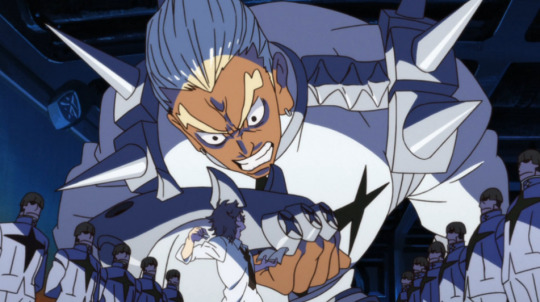
It's this devotion to the unique image that sets Kill la Kill apart from most of the other 2011-2013 shows I listed previously, shows that, while they might have a consistent aesthetic sensibility (such as Stein's;Gate's washed-outness or Fate/Zero's glimmering post-processing effects), are often conforming at their core to ideas of what anime "should" look like in terms of character design, setting, and animation. (The two Shaft shows I listed are an exception, but by this point Shaft's Akiyuki Shinbo had been doing his idiosyncratic visual style for over a decade, and wasn't exactly a fresh face.) Trigger's staff previously created Panty & Stocking, a show imitating the look and feel of western cartoons; Kill la Kill advances that idea into a wholly unique fusion of western and Japanese animation traditions, allowing it to break free of the insular anime landscape and its expected visual signifiers.
Obviously the counterpoint lurking beneath this preamble is that, under the unique visuals and tone, Kill la Kill isn't all that innovative at all, even painfully standard at times. Battles are decided by the power of friendship or the power of staying true to oneself (Don't Lose Your Way!), the hero is mind controlled and her friends call out to her until she breaks free, the one-dimensionally evil villain has a big end-the-world plot that everyone teams up to defeat. Even within the parameters the story establishes for itself, Ryuko proceeds linearly, starting out by fighting small fry club captains, then the Elite Four student council, then Satsuki the student council president, and finally Satsuki's mother who owns the school, with only a few speed bumps along the way.
But Kill la Kill makes the argument that aesthetics are too intimately interwoven with content to be disentangled that way. It's the crux of the conceit of the show, which is founded on a series of puns. "Fascism" sounds like "fashion," so in the world of Kill la Kill those concepts are now entwined. "School uniform" ("seifuku") and "conquest" ("seifuku") are homophones, so uniforms are the method by which Satsuki exerts her intra-Japanese imperialism. (Early on, Satsuki delivers a monologue in which she remarks on how Japanese school uniforms are aesthetically modeled on military uniforms, making it natural for her to militarize her school.) The title is itself a tripartite pun, combining words for "kill," "cut," and "wear." (Notably, this is a pun that blends the English and Japanese languages, much like the blended animation style.) Despite the visual, slapstick nature of Kill la Kill's humor, puns abound throughout. Some are obvious even in translation, such as the "Naturals Election" used to choose the new student council, while others can be difficult to catch. Nui, for instance, apes Dio Brando's catchphrase of "muda, muda, muda" (useless, useless, useless); later, when her arms are cut off, she screams "ude, ude, ude" (arms, arms, arms).
youtube
The core idea of most of these puns is that superficial similarity indicates similarity of content. Sometimes, this is an insightful observation, such as with the pun between fashion and fascism. Fascism is notoriously difficult to define rigidly in relation to other forms of dictatorship, but what is easy to define about it is its aesthetics, to the point that films like Star Wars are able to use aesthetic signifiers of fascism to define the politics of its villains even when withholding any actual explanation of those politics. Star Wars never has to show what the day-to-day rule of the Empire is like, because its army looks like the Nazis, so the audience gets the idea. Fascism as a political ideology and fascism as an aesthetic are, effectively, the same thing.
And if aesthetics are equivalent to meaning, then doesn't that mean that Kill la Kill looking new in fact makes it new? That its plot, generic in dry summary, is elevated by the distinctive way it's depicted? One pun, delivered upon the revelation that parasitic alien clothes have influenced humanity's evolution for the purpose of harvesting them for food (a story beat itself derivative of Puella Magi Madoka Magica), is that "the clothes make the mankind." The common refrain of Satsuki and Ragyo that people are "pigs in human clothing" hammers the point home: Aesthetics are everything. There is no meaning without aesthetics, just as people without clothes are unevolved animals.
Ultimately, though, Kill la Kill rejects this statement. Clothes are the enemy, literally, and the heroic organization fighting against them is Nudist Beach, whose members fight naked. At the end of the show, all clothes are destroyed, and the final image before the credits is of the entire cast in a giant, naked, triumphant huddle, an assertion of the inherent value of humanity even without aesthetic adornment. Isn't that the point behind all those power-of-friendship, power-of-believing-in-yourself speeches that Ryuko, Mako, and Senketsu use to turn the tables and win the battle? An appeal to a hidden inner nature that one must remain true to (Don't Lose Your Way!!!), that can overpower superficial displays of strength? Ryuko's mind control arc depicts this idea most overtly. She is controlled by having clothes sewn to her skin -- having an aesthetic forced onto her -- but Mako manages to dive into Ryuko's inner world to bring her back to her "true self."
This kind of undermines Kill la Kill as a work, though. What does a "nudist" Kill la Kill look like, stripped of its unique visual language? Certainly not something that would stand out from the waves of high school battle shounen that have been a fixture in the anime landscape since time immemorial. Kill la Kill's thesis might assert that there's a reason these power-of-friendship cliches endure (a sort of, if you'll allow me to become a parody of myself for a moment, post-postmodern reclamation of a narrative mode tarnished by irony and cynicism), but it contradicts the unique visual style that Kill la Kill developed to convey that idea.
In some ways, Kill la Kill does strip down to a nude, or at least semi-nude, state by the end. Many of its earlier concepts, including the connection between fashion and fascism, vanish as the story progresses. Satsuki and her fascist system are revealed to have been a deception while she secretly worked to betray her mother (playing on Ragyo's mistaken belief that aesthetics mean everything by Satsuki looking compliant while not actually being so), and once the twist occurs, the entire fascism plotline goes out the window. It's never really mentioned again; even when Ryuko gets on Satsuki's case for her past misdeeds, she only calls her out for "Looking down on people from on high," a general and ideologically-agnostic call against elitism. The 1-episode OVA set after the series briefly touches on the fascist system Satsuki enforced, with the episode's villain accusing Satsuki and the Elite Four of generating real, actual terror and abuse despite their ultimately pure motives (an assertion, once more, that aesthetics mean everything, that looking fascist makes you fascist no matter your true beliefs), but Mako quickly dismisses the claim with another power-of-friendship speech. Satsuki and the Elite Four have grown as people, she says. They're no longer bad like they used to be!
Kill la Kill also gets stripped down tonally by its end. The show's opening scene depicts a disobedient student being whipped, seemingly to death; later, his nude corpse(?) is displayed over the school gates. Combined with the title "Kill la Kill," it sets a dark, violent tone that lends weight to the otherwise cartoonish animation style. By the end, though, this dark tone is revealed as a false aesthetic; there is remarkably little killing in Kill la Kill. Stripped of real narrative stakes, the climactic battles diminish to flashy lightshows, action figures bouncing against each other. Worst of all, the blend of "fluid sakuga with choppy PowerPoint animation" I mentioned earlier increasingly tilts toward the latter. This is largely due to the prominence of Nui as an antagonist, since her cartoonishness is part of her character, but given Gainax's track record of running out of money and/or time by the end of its shows and phoning in parts of them, I wonder whether the habit transferred over to Trigger.
In short, as Kill la Kill strips down, it becomes a weaker show. In doing so, it not only undermines its own theme, but undermines itself as a truly new and innovative work, exposing its reliance on superficial aesthetic. The notion that Trigger "saved anime" would depend not only on Kill la Kill's individual success, but on its influence; twelve years out, and the only other notable shows like Kill la Kill were also made by Trigger. Perhaps you can see some influence on Masaaki Yuasa, who also blends high-quality sakuga with deliberately cheaper animation for comedic or stylistic effect, but he had already established himself in 2010 with Tatami Galaxy. Another show with a distinctive "Trigger" feel, Flip Flappers, was a flop flopper that caused its studio to immediately pivot to generic seasonal stuff.
My friend Lurina, when I asked her whether Trigger really had any influence over the larger anime landscape, suggested that Trigger sparked a general desire for more high-quality animation, which can be seen today in shows like Chainsaw Man or Dandandan. I would counter that those shows, while well-made, lack the distinctive blend of high and low, east and west that defines Trigger; if anything, the notion of the high-quality seasonal shounen adaptation comes from My Hero Academia, where Bones eschewed the traditional 500-episode weekly low-effort adaptation style of Naruto, Bleach, and One Piece and set the blueprint for shows like Demon Slayer, Jujutsu Kaisen, and so on, which adapt their source material in 12-episode chunks with lavish production values.
At the same time, I question whether Trigger even saved itself. Kill la Kill would be the studio's peak, and much of its subsequent output is a pale shadow of the show. (Its only other megahit, Darling in the Franxx, had an even more disastrous ending.) This culminated in BNA, a show that takes Kill la Kill's themes and iconography but does them cheaply and lazily. Since then, Trigger has rebounded -- but not by being "Trigger." Cyberpunk Edgerunners and Dungeon Meshi were both popular and well-regarded shows, but they were adaptations where Trigger had minimal control over the storytelling or aesthetic; Dungeon Meshi, other than a few sparse sakuga moments, doesn't even look distinctively like a Trigger show. It feels like any competent studio could have turned Dungeon Meshi into a hit. Trigger still exists, and in its partnership with Netflix is possibly stronger than ever, but it is losing its unique identity, becoming more standard, more similar to the crowd. Another conformer. Maybe the upcoming Panty & Stocking sequel can turn it around, but who can say.
Either way, Kill la Kill's moment has passed, without the cataclysmic ripple on the anime industry fans at the time expected or craved. Honestly, though, despite how I opened this essay, I can't blame them for their desire to see anime "saved." After all, the biggest anime of 2012, the year before Kill la Kill aired, did cause a cataclysmic ripple, one undoubtedly felt to this day. Unlike Kill la Kill, the biggest anime of 2012 spawned countless imitators, an endless flood of imitators, imitators that have themselves spawned imitators and imitators of imitators. That anime of 2012 has even extended its reach past anime, coating the current webfic scene; one could say that the site RoyalRoad would not exist if not for it. In face of such an oppressive, daunting influence, perhaps those fans of 2013 were right to clamor for something, anything, that would reveal a new direction, a way out. In such a context, one might even see it as tragic that Kill la Kill failed to deliver, that at the last moment it came up short. If Kill la Kill was the fork in the road leading to sunnier pastures, this anime led the industry into a deep, dark forest.
The name of that anime?
Sword Art Online.
270 notes
·
View notes
Text
Dorothy's Big List of Comic Book Recs - DC Comics Edition
I often get asks about getting into comic books, and how daunting it seems, given the huge back catalog of titles and issues available. I'm here to tell you it doesn't have to be scary! From miniseries that act as good introductions to characters to runs on ongoing titles by individual creators that serve on jumping-on points, there's lots of ways to get into comics without having to have a lot of background knowledge, and I'm going to give you a lot of potential places to start. Please note that this post only covers DC Comics; Marvel and indie lists will follow! Also note that I haven't read everything, and I won't recommend something I haven't read, so a few runs or books some consider must-reads may not be on here. This is based purely on books I have read and enjoy, and that I think are suitable for new readers. I'm also not including books from the Milestone and Wildstorm imprints as they're kind of a separate sphere to me, although some Vertigo books may be included.
SUPERMAN
All-Star Superman by Grant Morrison and Frank Quitely: This is the book that made me a Superman fan. It is an out-of-continuity celebration of Superman and his world, and an exploration of why Superman as a character has endured for nearly a century.
Superman For All Seasons by Jeph Loeb and Tim Sale: A gorgeously-illustrated and Americana-flavored recounting of Superman's early years in Metropolis, anchored narratively by the changing of the seasons.
Superman: Birthright by Mark Waid and Lenil Francis Yu: For my money, the definitive origin story for Superman. Great characterization of the entire supporting cast, including Lex Luthor, make this a perfect entry point into the character and his world.
Action Comics (1939) and Superman (1939) by Jerry Siegel and Joe Shuster: The earliest Superman stories are still really great, and have a populist edge that many later stories sanded down. They're pulpy and fun and I recommend them!
Action Comics (2011) by Grant Morrison: This run spans issues 1-18, plus a special issue 0, of the series launched as part of DC's mostly-failed 2011 reboot, and covers Superman's early years in this continuity. The early issues bring back some of the edge that was present in the Golden Age comics, and the rest of the run is solid stuff as well. Morrison always comes highly recommended.
Superman: Red and Blue: An athology series that focuses on a broad sampling of Superman's world and supporting cast, written and drawn by various creators.
Action Comics (1939) by Geoff Johns: Specifically, I would say that issues 855 to 870 are a good span to be checking out for Geoff Johns' run on the book. These include some great stories focusing on classic Superman villains such as Bizarro, Toyman, and Brainiac.
Superman Smashes the Klan by Gene Luen Yang and Guruhiru: An adaptation of a classic Superman radio story set in the 1940s and focusing on Superman's place as an immigration narrative. And Superman gets to rough up some Klansmen!
Man and Superman by Marv Wolfman and Claudio Castellini: Another story of Superman's early years, this one focusing on his struggles to adapt to life in the big city after moving from Smallville, as well as his first encounters with Lois Lane and Lex Luthor.
Superman: Up in the Sky by Tom King and Andy Kubert: A lovely self-contained story which demonstrates just how far Superman will go to save a single life.
Superman (1939) by Elliot S! Maggin: This mammoth run spans issues 247 to 400 of the classic title, and includes some fantastic stories such as "Must There Be a Superman?" (issue 247), "The Greatest Green Lantern of All" (issue 257), and "The Living Legends of Superman" (issue 400)
Superman (1939), Adventure Comics (1938) and Action Comics (1939) by Mort Weisinger: This run spans a lot of the Silver Age era of Superman, including Action Comics #241-392, Superman #120-231, and Adventure Comics #247-396. It's a lot of issues, but in those days you can mostly read them in any order since they're pretty self-contained. This run includes a lot of classic villains and stories, as well as the earliest adventures of the Legion of Super-Heroes.
Supergirl: Woman of Tomorrow by Tom King and Bliquis Evely: A spacefaring take on a True Grit-style western with gorgeous art, and a definitive story for the Girl of Steel.
Superman’s Pal, Jimmy Olsen (2019) by Matt Fraction and Steve Liber: a madcap romp and a delightful sendup of Silver Age weirdness.
BATMAN
Batman: The Long Halloween and Batman: Dark Victory by Jeph Loeb and Tim Sale: Another Loeb/Sale joint, focusing on Batman's earlier years and the transition of Gotham's underworld from the mob to a coterie of costumed kooks.
Arkham Asylum: A Serious House on Serious Earth by Grant Morrison and Dave McKean: An examination of the facility housing Batman's rogues, and what those rogues symbolize in his world.
Batman (1940) by Dennis O'Neil: This is a classic run which re-established a dark tone for the Dark Knight which has endured to this day. The run spans Batman #224-268, along with a handful of issues of Detective Comics. Among the major developments of this run are the introduction of Ra's al Ghul and his daughter Talia.
Batman: A Lonely Place of Dying by Marv Wolfman, George Perez, and Jim Aparo: The definitive story about why Batman needs Robin. Read it in trade since the story spans both the Batman and New Titans titles.
Batman by Grant Morrison: I'm hesitant to include this because it delves so deep into Batman lore, but it really is essential reading, introducing Damian Wayne along with other concepts. Please do disregard Morrison's frankly appalling characterization of Talia. Read in omnibus format as the run spans multiple titles.
Batman: The Killing Joke by Alan Moore and Brian Bolland: It's cliche at this point but the story still is fantastic and one of the best Joker stories ever written.
Batman: No Man's Land: An epic storyline across many titles dealing with Gotham being cut off from the US after a massive earthquake and Batman's efforts to keep the peace in an abandoned city. Read in trade format.
Batman (2011) by Scott Snyder: This run spans issues 1 through 51 of the New 52 relaunch, and introduces concepts such as the Court of Owls. It's a fun run, including a brief period where Jim Gordon acts as Batman.
Batwoman (2011) by J.H. Williams III and W. Hayden Blackman: A gorgeously-illustrated book about Batman's cousin and her adventures as the Batwoman. Worth reading for the art alone.
Nightwing (1996) by Chuck Dixon: Dixon's a tool but this is still the definitive Nightwing run. This run includes volume 1 of Nightwing, a 4-issue mini, as well as issues 1-70 of volume 2, which establishes Dick's home base of Bludhaven as well as his rogues' gallery.
Detective Comics (1937) by Paul Dini: This run spans issues 821 to 852, and features some great stories by one of the great Batman writers and a co-creator of the classic animated series.
Robin (2021) by Joshua Williamson: A great run that helps to flesh out Damian Wayne's place in the DC Universe.
The Boy Wonder by Juni Ba: A great story with gorgeous art that focuses on Damian Wayne and his relationships with the other members of the Batman Family.
Batgirl (2000): The first series to focus on a Batgirl, specifically Cassandra Cain, the best Batgirl, as she struggles to adapt to life after an abusive childhood being raised as an assassin.
WONDER WOMAN
Wonder Woman (2006) by Gail Simone: Simone's run is the longest that a woman has ever written comics' premiere female superhero, and it's just good comic book fun. The run spans issues 14 to 44.
Wonder Woman (1987) by Phil Jimenez: Jimenez's childhood love of Wonder Woman shines through in his run, which placed a renewed focus on Diana's supporting cast and especially her family. The run spans issues 164 to 188.
Wonder Woman (1942) and Sensation Comics (1942) by William Moulton Marston: Wonder Woman's creator laid down the basics of the character and her world, and those early Golden Age stories are still a great read. They're fun, engaging - and more than a little kinky with hindsight.
Wonder Woman (1987) by Greg Rucka: In the early 21st century, Greg Rucka was The Guy for writing female superheroes, and his run on Wonder Woman is great. It features Diana becoming an ambassador, writing a book, fighting Medusa, and matching wits with Veronica Cale, her own Lex Luthor. The run spans 196-226. I must also mention Wonder Woman: The Hiketeia, also by Rucka, which is a Greek tragedy where Diana finds herself torn between duty and justice.
Wonder Woman Historia: The Amazons by Kelly Sue DeConnick: A beautifully-illustrated story of the Amazons and the Greek goddesses, which lays the foundations for Wonder Woman's world.
Wonder Woman (1987) by George Perez: This run reintroduced Diana after Crisis on Infinite Earths, and the first 25 issues feature Perez's simply-unmatched artwork. The whole run spans the first 62 issues of the book, and serves as a blueprint for most subsequent takes on the character.
THE FLASH
Flash Comics (1940) and All-Flash (1941): The Golden Age Flash and his early stories by his creator Gardner Fox. Must-read if you're interested in Jay Garrick, the first Flash.
Showcase #4, 8, and 13, and The Flash (1959): The Silver Age Flash, Barry Allen, made his debut and early adventures here. Much of the art is by the great Carmine Infantino, and Gardner Fox returned to write some stories. The whole concept of the multiverse debuted in this run.
The Flash (1987) by Mark Waid (as well as Grant Morrison and Mark Millar): This run starts in issue 62 and lasts until 162, with a brief run by Grant Morrison and Mark Millar towards the end. This run is the definitive Flash run, focusing on Barry Allen's protege Wally West maturing in the role of the Flash and establishing himself as the true fastest man alive.
The Flash (1987) by Geoff Johns: This run spans issues 164 to 225, and refocuses the Flash's traditional rogues' gallery, offering modern origins for many of them, while also introducing new foes like Girder, Blacksmith, and a new Reverse-Flash.
The Flash (2016) by Joshua Williamson: This run spans issues 1-88, as well as 750 to 762 of the relaunched volume 1 of the book. I hate the recentering of Barry Allen from 2009 to 2019, but Williamson's run is the most tolerable, and serves as a love letter to the Flash, while also setting the stage for Wally to return as the primary holder of the mantle.
The Flash (2023) by Simon Spurrier: The current run of the Flash, it focuses on Wally as the main Flash and the Flash Family as an ensemble. The extended first arc features a threat to time itself, and goes into some really surreal and experimental territory for a Flash book.
Impulse (1995) by Mark Waid, et al.: A more lighthearted and comedic companion book to Waid's run on Flash, this book focuses on Bart Allen, Barry's grandson, who was raised in the future and has the attention span of a goldfish, as well as his relationship with the zen guru of speed, Max Mercury.
GREEN LANTERN
The Green Lantern (2018) by Grant Morrison: A police procedural starring Hal Jordan that gets into some pretty freaky territory, with gorgeous interiors by Liam Sharp.
Green Lanterns (2016) by Sam Humphries: A buddy cop type title focusing on the team of Simon Baz and Jessica Cruz. Humphries' run spans the first 32 issues of the book.
Far Sector by N.K. Jemisin and Jamal Campbell: A murder mystery in space which establishes a new Green Lantern, Jo Mullein. Super easy to get ahold of since it was rereleased as part of DC's Compact Comics line of $9.99 trades.
Green Lantern/Green Arrow (1970) by Dennis O'Neil and Neal Adams: This run brought a social conscience to comics as Green Arrow was reinvented as a left-winger and a man of the 60s counterculture, joining Green Lantern on a quest across America. The run spans issues 76 to 89 of the book.
Green Lantern (1990) by Ron Marz. Marz's run starts in issue 48, and sees the Green Lantern paragon Hal Jordan descend into darkness before being replaced as defender of Earth by Kyle Rayner. The run lasts until issue 125, and as Kyle is my favorite Lantern I have a fondness for it.
Green Lantern (2005) 1-67 and (2011) 0-20 by Geoff Johns: Johns brought Hal Jordan back as the main GL, and his run expanded the world of Green Lantern by introducing the emotional spectrum. His run is the basis for most Green Lantern lore going forward, and is pretty essential reading.
Green Lantern: War Journal by Phillip Kennedy Johnson and Montos: A 12-issue series featuring John Stewart as he ventures into space to fight a dark force corrupting life in the galaxy. The new definitive John Stewart run.
TEAMS AND TEAM-UPS
JLA by Grant Morrison, Mark Waid, Joe Kelly, et al.: This was a back-to-basics approach to the Justice League with a core group of characters. Morrison's run on the book is probably the best, but Waid and Kelly also bring in some good stories.
Justice League of America (2007) by Brad Meltzer and Dwayne McDuffie: Another relaunch of the time, this time with a large roster inspired by the classic 1970s era of the League. Some great stories in this run, including a crossover with the Milestone characters.
JSA (1999) by Geoff Johns, Paul Levitz: The first team in comics was relaunched in the 90s by Geoff Johns, who established the Justice Society as a family first, later bringing in the Marvel Family for some great stories fleshing out Black Adam's character.
Justice Society of America (2007) by Geoff Johns: Johns' second run on the JSA is a continuation of the first, with a focus on legacy and new heroes reclaiming the mantles of Golden Age heroes. Introduces the delightful Maxine Hunkel as the wind-powered Cyclone.
New Teen Titans by Marv Wolfman and George Perez: Lightning in a bottle. This book likely saved DC after the disastrous DC Implosion. The best Titans run of all time, quality of art and writing that has never been recaptured with this team. If you loved the cartoon as a kid you will love this book.
Young Justice by Peter David and Todd Nauck: For all intents and purposes, the Teen Titans for the 90s generation. Funny, heartfelt, with great cartoony art by Nauck.
Doom Patrol (1987) by Grant Morrison, Rachel Pollack: A truly, wonderfully weird tale of the most off-beat superheroes of all, with themes of identity, life, and art woven throughout.
The Terrifics by Jeff Lemire, Gene Luen Yang: At a time when Marvel was treating the Fantastic Four like dirt, DC put out their own version, which captures the wonderous adventure of a Silver Age science fiction book with some great character work from a great core cast. A thoroughly underrated title.
Suicide Squad (1987) by John Ostrander: An often darkly-humorous book about a team of second-string supervillains coerced into doing the government's dirty work. The definitive Suicide Squad run.
Villains United (2005), Secret Six (2006), and Secret Six (2008) by Gail Simone: A group of supervillains forced together by circumstance and find themselves working together as mercenaries. A real found family of freaks type of situation.
Legion of Super-Heroes by Paul Levitz and Keith Giffen: This run spans issues 282 to 313 of the 1980 book, and 1 to 63 of the 1984 book. Includes some of the greatest Legion stories, including the Great Darkness Saga.
Birds of Prey (1999) by Gail Simone: This run covers issues 56 to 108, and focuses on female heroes kicking ass, basically Charlie's Angels with superheroes.
Batman/Superman: World's Finest by Mark Waid and Dan Mora: A team-up book between Batman, Superman, and the DC Universe, set earlier in their careers.
Justice League International (1987) by Keith Giffen, J.M. DeMatteis, and Kevin Maguire: As much a workplace comedy as a superhero book, this is a very different take on the Justice League, from the time when "bwa-ha-ha" ruled the DCU.
THE FOURTH WORLD
The Fourth World Epic by Jack Kirby: Read in omnibus or trade format. The first stories of the Fourth World from the King of Comics, Jack Kirby. The story spans Kirby's run on Superman's Pal Jimmy Olsen, The New Gods, The Forever People, and Mister Miracle, and ends in The Hunger Dogs.
Orion (2000) by Walt Simonson: A follow-up to Jack Kirby's epic, this book focuses on Orion, the son of Darkseid, and his quest to vanquish his father once and for all.
Bug! the Adventures of Forager by Lee Allred and Mike Allred: With Mike Allred's striking artwork, this book serves as a love letter to Kirby's time at DC Comics.
Mister Miracle (2017) by Tom King and Mitch Gerads: A slightly-psychedelic take on the Fourth World, focusing on Scott Free and his family with the backdrop of a bloody war unfolding between New Genesis and Apokolips
New Gods (1989) by Mark Evanier: This was a return to form for the New Gods, who hadn't had a lot of new stories to themselves since Kirby left DC, and it's a great read.
AND THE REST
Green Arrow: The Longbow Hunters (1987) and Green Arrow (1988) issues 1-80, by Mike Grell: Probably the definitive Green Arrow run. Political, edgy, and mature.
Animal Man (1988) by Grant Morrison: A fun and surreal series of adventures featuring one of the DCU's unsung heroes.
Booster Gold (1986) by Dan Jurgens: A Reagan-era story of a money-obsessed celebrity superhero rediscovering the altruistic spirit of a true hero buried deep within him.
Zatanna: Bring Down the House by Mariko Tamaki and Javier Rodriguez: A quest through the realms of magic as a reluctant witch gets caught in the crossfire of a mystical war.
Amethyst, Princess of Gemworld (1983, 1985, and 1987): For fans of magical girls and sword and sorcery, this is a must-read. A girl from Earth discovers she is the princess of a mystical realm and embarks on a quest to save it.
The Question (1987) by Dennis O'Neil: A grounded, philosophical story of a man trying his best to make things better in a city abandoned to corruption and decay.
Monkey Prince by Gene Luen Yang and Bernard Chang: Drawing on Chinese mythology, this book focuses on an unlikely superhero with connections to the monkey king, Sun Wukong.
Blue Beetle (2006) by John Rogers and Keith Giffen: Giffen leaves after issue 10, but Rogers continues until issue 25, and the rest of the volume is pretty decent as well. It establishes Jaime Reyes as the Blue Beetle, and if the cards had been better he could have easily become DC's answer to Spider-Man. Ah, well. It's always nice when he gets a book, and this is probably the best one.
Galaxy: The Prettiest Star by Jadzia Axelrod and Jess Taylor: a YA graphic novel featuring a transgender alien princess. What's not to like?
Hawkworld (1989 and 1990): A science fiction epic of Thanagar, world of the hawks. A great read on its own, but it unfortunately did a lot of damage to the continuity of the Hawkman family of characters.
Hawkgirl (2023) by Jadzia Axelrod and Amancay Nahuelpan: A fun little miniseries focusing on Kendra Saunders moving to Metropolis and having to deal with the trauma and hardship of her past. Guest starring Galaxy from that other book!
Starman (1994) by James Robinson: A grungy, Gen X book about legacy and what we leave behind, with plenty of hooks for the new reader to investigate regarding the Golden Age superheroes.
The Power of Shazam! by Jerry Ordway: The post-Crisis take on Captain Marvel and the Marvel family. A great read, and the last great run for the classic versions of these characters.
Sandman (1989) by Neil Gaiman. Obligatory Neil Gaiman is a piece of shit out of the way, his Sandman book is a beautiful and at times horrifying read, and its importance as a story manages to outweigh my disdain for its creator.
Swamp Thing (1982) by Alan Moore and Steve Bissette: Moore's run begins in issue 19 and ends in issue 64. This is the definitive Swamp Thing run, which set the standard for all to follow. It's a creepy and often touching story which remains some of Moore's best work in the medium.
171 notes
·
View notes
Text
Masterpost: Visual Kei movies & other types jrockers were involved
So, it came to my attention some of you want to watch more visual kei movies so I thought of listing what I know, in case you've missed any of those. Please feel free to add anything I've missed with reblogs or in the comments.
Thank you @kirk-goes-to-gallifrey for the three movie links! ^^ And thank you @waretamado for helping with the titles of Plastic Tree's movies! Btw most of the vkei only movies must still be available on YT guys, however not all of them will be on HD.
Visual Kei movies:
Seth et Holth (1993) (Hide) YT link (https://www.youtube.com/watch?v=Vx_laJCEpew)
Moon Child (2003) (Gackt & Hyde)
Verte Aile/Bel Air (1997) (Malice Mizer) YT link (https://www.youtube.com/watch?v=Vdd58pTaK8A)
Bara no Konrei/Bridal of the Rose (2001) (Malice Mizer) YT link (https://www.youtube.com/watch?v=Tr1d_cFRnxs)
BeatRock☆Love (2009) (Takeru ex.SuG)
Number Six (2006) (Alice Nine)
Yuku Pura Kuru Pura... Edokawa Puranpo no 「Ougon otoko」~「Visual bako no bijo」 (Plastic Tree) YT link (https://www.youtube.com/watch?v=81Bb-3L4l2E)
Yuku Pura Kuru Pura... Edokawa Puranpo no 「Onan tokage」~「Bishounen wo kuu bijo」 (Plastic Tree) YT link (https://www.youtube.com/watch?v=wAha6vDCE0Q)
Yuku Pura Kuru Pura...Edokawa Puranpo no「Angura Kaijin」~「Remon no bijo」 (Plastic Tree) YT link (https://www.youtube.com/watch?v=Pzt3ai5LSXc)
Ascendead Master (2009) (Versailles)
Onegai Kanaete (2011) (Versailles)
Oresama (2004) (Miyavi) YT link (https://www.youtube.com/watch?v=NcBvKQfVKNM)
Soundtrack (2002) (Sugizo) (I don't know if it's a vkei movie but since the theme appears to be music-oriented, I put it here)
Ochanomizu Rock (2018) (series) (Chiyu of Sug & Ryuji Sato of The Brow Beat) (it gives more jrock than vkei vibes but it's band-focused so maybe it's better I put it under this section)
Non Visual Kei movies jrockers acted in:
Kagen no Tsuki (2004) (this is a live action of a manga) (Hyde)
Aquarian Age: Juvenile Orion (2008) (live action) (Takeru of Sug & Alice Nine)
Paracelcus' Homonculus (2015) (this is an artsy film based off a photographer's exhibition) (Takeru of SuG)
Midori: the Camellia girl (2016) (live action of a manga) (Takeru of SuG)
Bunraku (2010) (Gackt)
Akumu-chan (2014) (Gackt)
Karanukan (2018) (Gackt)
Tonde Saitama 1 (2019) & 2 (2023) (Gackt)
Moshimo Tokugawa Ieyasu ga Sori Daijin ni Nattara (2024) (Gackt)
Furin Kazan (2007) (Gackt)
Mr. Brain (2009) (it must have been 1 episode or 2) (Gackt)
Tempest (2011) (Gackt)
Sengoku Basara (2012) (Gackt)
Time Spiral (2014) (Gackt)
BLEACH (2018) (live action) (Miyavi)
Hell Dogs (2022) (Miyavi)
Familia (2023) (Miyavi)
Maleficent: Mistress of Evil (2019) (Miyavi)
Kate (2021) (Miyavi)
Stray (2019) (Miyavi)
Unbroken (2014) (Miyavi)
30-thirty (2000) Hakuei
The Legend of the The Stardust Brothers (1985) (Issay)
溺れる魚 / Drowning Fish (2001) (Izam of Shazna)
Longinus (2004) (more of a short than a full movie I guess) (Atsushi Sakurai)
Other
REPO! The Genetic Opera (2008) (Yoshiki was involved with the music production of this film. Personally I learnt it years after I'd watched it)
Death Trance (2005) (It features many Dir en Grey songs in its soundtracks)
Hamlet (1998) (A rock opera version of the famous play, by Penicillin) YT link (https://www.youtube.com/watch?v=hljXGPsUU1Q)
黒蝶の秘密 / The Secret of the Black Butterfly (2018) (It features a song Chiyu of Sug wrote, called Aiyoku no Hana / Flower of Lust)
I hope you can find anything you like and enjoy!
#visual kei#vkei#visual kei movies#hide#x japan#versailles#malice mizer#gackt#miyavi#takeru#hyde#l'arc en ciel#vamps#alice nine#plastic tree#chiyu#sug
605 notes
·
View notes
Text
rereading it and still loving it the way you did when you were 13 is also a very exciting feeling
finally locating the downloaded copy you knew you had somewhere of a fic that's been deleted for years is such an exciting feeling.
#like even though there's many Dated parts of it. that was still very enjoyable. i totally still see what i saw in it all those years ago#since this was a downloaded copy i converted to epub i could also add notes along the way which was fun. i love annotating#(not that they were terribly insightful notes. it was mostly me saying 'HE'S JUST LIKE ME FR' @ stan and occasionally others)#one thing that is funny tho is it's just like. a quintessential 'this was written IMMEDIATELY after Ass Burgers aired' fic. in terms of sta#characterization. like i do mean quite literally Ass Burgers premiered Oct 5 2011. this fic began publishing Oct 11 2011.#DIRECT cause and effect there. but like BEFORE that sort of thing with Stan was super overdone because it was. literally new#and also just interesting to read it now bc. when i first read it—around age 13—I was *so* much younger than the age that they#are for the actual action of the fic. vs now i'm a few years older than they are in it. its fun approaching it from a standpoint where#like... i Get It and what being that age is like. in a way i had no concept of yet when i was in middle school sfdgdhgf#anywayyyyy all this to say. im really happy to have done a reread of that. and it still holds up remarkably well imo characterization-wise#for something written that long ago (like. as i stated in my original post. there's been like 100 new sp episodes since then! that's a#whole lot of canon to work with).
14 notes
·
View notes
Text
Writing Notes: Life Domains
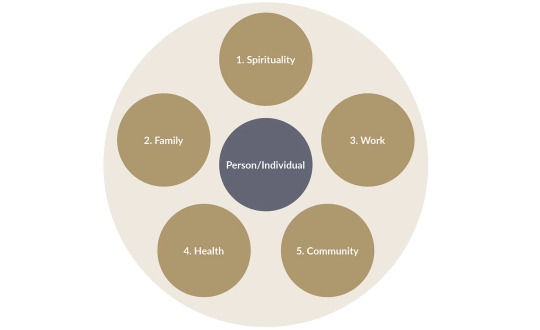
There are a great number of divisions and domains in life (Rojas, 2006; Cummins, 2003; Headey & Wearing, 1992; Veenhoven, 1996), encompassing anywhere from a small range to the infinite possibilities of human activities and areas of being (Rojas, 2006).
Vanderweele (2017) generally suggests that there are 5 domains of human life that should be focused on to promote human flourishing:
Spirituality. This area of life should be prioritized but is often neglected (Moberg & Brusek, 1978). Although the words religion and spirituality are often used interchangeably, a person does not have to practice a faith to be spiritual (Mercadante, 2014). Spirituality enables a purpose in life and dictates how someone may think, feel, and behave to allow them to gain fulfillment (Mercadante, 2014). Spirituality is based on an individual’s principles and focuses on creating a good life for themselves (Dierendonck, 2011). When a person’s actions are not in line with their spiritual beliefs, this can cause an imbalance within this life domain.
Family. An essential but influential domain. Family does not have to be biological. More importantly, it relates to people with whom you have a meaningful relationship (Robins & Tomanec, 1962). The family domain is an area of life that can become imbalanced when a person’s roles and responsibilities are not being fulfilled. This may be because another domain is receiving more attention, such as work (Rao & Indla, 2010). It may be that the beliefs, values, and behaviors of the person are not in line with other family members. When this domain is imbalanced, it results in fractured relationships, estrangement, and separations (Olah, Kotowska, & Richter, 2018).
Work. Plays a fundamental part in the life of most adults throughout all societies. It has an economic and instrumental role because it provides a livelihood (Scoones, 2009). Work provides a will to learn, develop, and accomplish goals. Work also has a psychosocial aspect. It gives meaning to an individual’s life and satisfies their need to be part of society (Sharabi & Harpaz, 2007). It is important that people enjoy what they are doing, where they are working, and who they are working with. If an individual is investing too much time in this domain to the detriment of other domains, it may cause an imbalance.
Health. This domain concerns physical, emotional, and mental health and wellbeing. Individuals can learn how to develop a healthy lifestyle from an early age through education (Cutler & Lleras-Muney, 2014). Physical health can deteriorate from work stress and financial demands. Poor health can affect independent living and the ability to work and engage with family members and the community. This can be detrimental to positive emotional and mental health and wellbeing (Wong, Chan, & Ngan, 2019). It is essential to adopt a healthy lifestyle and promote healthy living. Understanding how to exercise, eat healthily, relax, and connect spiritually helps to promote overall health.
Community. Relationships outside the family are essential (Darling, Hamilton, & Shaver, 2003). These can be with friends or specific communities, such as the neighborhood community, faith or sports-based interests, or hobbies that allow a person to develop a sense of belonging with others (Darling et al., 2003). Community allows people to be united and, like family, allows a sense of safety and security (Bowe et al., 2020). It provides a sense of achievement and fulfillment, especially when an individual is working toward a shared community goal, such as raising money for a good cause or helping others within the community (Bowe et al., 2020). Nevertheless, spending too much time with the community and neglecting other domains, such as family, can cause an imbalance.
This is a simple and easy-to-understand model that illustrates the main life domains recognized by most people. Vanderweele's interpretation is widely recognized and will help you understand how life domains interact with each other and how you can find balance between them.
The following are strategies or techniques that can be used to balance life domains.
Compensation is a technique that increases positive life domains to counteract negative life domains. Decreasing the not-so-good parts of negative life domains reduces the unhappy influence from these domains on overall life satisfaction (Lee & Sirgy, 2018).
Accept and acknowledge that not everything can be done in every domain all the time. There will always be limitations to getting everything done due to constraints on time, energy, and money. The ability to accept ourselves is a crucial factor in improving our overall feelings of emotional wellbeing (MacInnes, 2006).
Breitman and Hatch (2000) wrote a book on a straightforward idea to balance life domains. Their book concerns the art of saying ‘no’ without feeling guilty. The use of this two-letter word can help us rid ourselves of all the things that are preventing us from living positively in all domains.
Planning time and organizing activities that are the main priority can help to minimize stress. Poor organization and time management may cause life domains to feel stretched and overloaded.
Ensure time is scheduled for relaxation. Many studies have found this is important in reducing stress, anxiety, and low mood (Manzoni, Pagnini, Castelnuovo, & Molinari, 2008).
Flourishing - a condition denoting good mental and physical health: the state of being free from illness and distress but, more important, of being filled with vitality and functioning well in one’s personal and social life.
Languishing - the condition of absence of mental health, characterized by ennui, apathy, listlessness, and loss of interest in life.
Sources: 1 2 ⚜ More: Notes & References ⚜ Writing Resources PDFs
#writing reference#life domains#psychology#character development#writeblr#dark academia#literature#writers on tumblr#spilled ink#creative writing#character building#writing prompt#light academia#lit#writing inspiration#writing resources
93 notes
·
View notes
Text
Game Informer:

"Cover Reveal – Dragon Age: The Veilguard by Wesley LeBlanc on Jun 09, 2024 at 02:00 PM This month, Dragon Age: The Veilguard (you read that right – Dreadwolf is no more) graces the cover of Game Informer. After years developing Baldur's Gate and its sequel early in its history, BioWare struck out to create its own fantasy RPG. That series began with Dragon Age: Origins in 2009. It was followed up with Dragon Age II in 2011, and then Dragon Age: Inquisition in 2014. While the Dragon Age series' history has its ups and downs, fans have been patiently waiting for BioWare to return to the franchise, and 2024 is finally the year. We visited BioWare's Edmonton, Canada, office for an exclusive look at Dragon Age: The Veilguard, including a look at its character creator, its prologue and opening missions, and more. We also spoke to many of the game's leads about the name change, the series' shift to real-time action combat, the various companions (and the relationships you can forge with them), and The Veilguard's hub location. You can learn about the titular Veilguard, Solas' role in the game, and so much more in our 12-page cover story for Dragon Age: The Veilguard."

"But there are plenty of other excellent reads within this issue of Game Informer! Some of us flew to Los Angeles, California, to attend Summer Game Fest and the not-E3 weekend's various other events to check out new games, interview developers, and more. Our previews section is jam-packed with new details about upcoming releases we can't wait for. Brian Shea flew to Warsaw, Poland, to check out two upcoming releases – Frostpunk 2 and The Alters – and he came away excited about both. Jon Woodey went hands-on with Final Fantasy XIV's upcoming Dawntrail expansion (and spoke to director Naoki Yoshida, too), and as someone with 8,000 hours in the game, his words are the ones you'll want to read. On the freelance front, Charlie Wacholz writes about how last year's Dave The Diver is one of the best game representations of the rewards and struggles of working in the food and beverage industry, and Grant Stoner spoke with Sony and Microsoft about the development of process and history of the companies' Adaptive and Access controllers. And for a lil' terror this summer, Ashley Bardhan spoke to several horror game developers about why the alluring town known as Silent Hill is a crucial location to Konami's horror masterpiece. As always, you'll find an editor's note from editor-in-chief Matt Miller, reviews from various freelancers and staff editors, a Top 5 list (hint hint: dragons), and more. Here's a closer look at the cover:"


"Not a print subscriber yet but want this issue? Well, you're in luck! Subscribing today – or within the next few days – will net you a print copy of this issue! You can join the ranks of the Game Informer print subscribers through our new standalone print subscription! Just head here to sign up for either one or two years at a fraction of the cost of buying the issues individually! You can even gift a print subscription to your favorite gamer! SUBSCRIBE TO THE PRINT MAGAZINE You can also try to nab a Game Informer Gold version of the issue. Limited to a numbered print run per issue, this premium version of Game Informer isn't available for sale. To learn about places where you might be able to get a copy, check out our official Twitter, Facebook, TikTok, Instagram, BlueSky, and Threads accounts and stay tuned for more details in the coming weeks. Click here to read more about Game Informer Gold. Print subscribers can expect their issues to arrive in the coming weeks. The digital edition launches June 18 for PC/Mac, iOS, and Google Play. Individual print copies will be available for purchase in the coming weeks at GameStop."

[source] <- they explain at the link how to read this issue.
aaah they have had a look at the character creator!!! I can't wait for this coverage.
#dragon age: the veilguard#dragon age: dreadwolf#dragon age 4#the dread wolf rises#da4#dragon age#bioware#video games#solas
234 notes
·
View notes
Text
I think Justice League Action might've been the last good all ages animated DC tv show. I don't like my adventures with superman, so it doesn't count for me. And if Justice League Action was the last all ages animated DC show...then we haven't had a good animated DC tv show in seven or eight years. Christ. And the last cartoon from DC that I liked that wasn't 12 minutes long was Batman: The Brave and The Bold.
Batman: The Brave and The Bold ended 14 years ago! It started 17 years ago! 2008 to 2011. We haven't had a good all ages DC cartoon that's 20+ minutes in over a fucking decade! Why!? DC, do better. Do fucking better! Or someone else is going to have to do something for you. I could pitch an animated Wonder Woman show. Or an animated show about Batman and Robin (Jason Todd). I could even pitch you something about Captain Marvel/Shazam! Because someone needs to get you to clean up your act and start doing all ages programming again!
@billybatsonmylove @v4guelyv4mpiric @conundrumrespeculis I don't know why, but you were the first three names that came to me. And I feel like you might at least understand my anger here. So I tagged you. I don't know why i've been tagging so many people lately. Maybe i'm just getting accustomed to it, finally. Either way, we need more all ages cartoons from DC and probably from Marvel too. And we need more cartoons that are a full half hour. I don't want 12 minute shorts constantly.
#dc#dc comics#this applies to you too#marvel#marvel comics#comic books#comics#tv shows#tv#dc tv shows#dc tv#marvel tv#marvel tv shows#batman the brave and the bold#btbatb#justice league action#jla#my ideas#ideas#captain marvel#shazam#billy batson#batman#robin#jason todd#jason todd robin#robin jason todd#wonder woman#diana prince#diana of themyscira
43 notes
·
View notes
Text
trying to explain a plot point or character in DC comics to someone who knows nothing abt comics is like.
okay so last year in Batman/Superman World's Finest they- hold on no, you need more context. okay so in 2016 DC started- hm, okay actually, in 2011, flashpoi- no hold on we need to go further back.
in 1985, there was a crisis and- hm no that still doesn't- okay in the silver age- ah you don't know what that is, uh, well you see in 1938, action comics- no that's not the full picture either.
flash gordo- no. uhh the first american comic book came out in 1842 and- hold on. johannes gutenburg invented the printing press in 1436- actually woodblock printing in china goes back to the 9th century and- well paper was invented around 105 AD and- cuneiform tablets were used around 3500 BCE and then- oh hm maybe i should explain the... okay so in ancient Mesopotamia- ah fuck it.
in the beginning, god created-
1K notes
·
View notes
Text

The Folks behind the Toons
Bruce W. Smith
Bruce Wayne Smith was born on September 6, 1961, in Los Angeles, California. He loved cartoons throughout his childhood and, at age 10, made his first animated film based on designs of One Hundred and One Dalmatians. He attended the California Institute of the Arts and graduated in 1981.

Shortly thereafter Smith got a job as an assistant animator on a TV short Garfield in the Rough and later served as a freelance animator for Pinocchio and the Emperor of the Night. He was hired by Walt Disney Studios as an animator for Who Framed Roger Rabbit.
In the early 1990s, Smith was selected by producer Reginald Hudlin to direct the Paramount Pictures animated film Bebe's Kids. An ambitious project, the film performed poorly and received mixed to negative reviews from critics; although some critics lauded the movie for its unadulterated depiction of Black culture and language without effort to make it more palpable to white audiences.

Entertainment reporter Kendra Beltran noted "Bebe’s Kids proved that a Black animated cast meant something to audiences. Maybe not monetarily but in a sense that Black characters didn’t just have to be the resident tokens. It would take some time before Hollywood grasped that notion but in a way, we have Bebe’s Kids to thank for what followed with the likes of The Boondocks and Disney’s The Proud Family."

In the years that followed, Smith was credited as a character designer for Ted Turner's ‘A Cool Like That Christmas,’ ‘The Pagemaster,’ and ‘Happily Ever After: Fairy Tales for Every Child.’ he additionally served as co-director on the Warner Bros. live-action animated film ‘Space Jam’ before returning to Disney as supervising animator on such films as ‘Tarzan’ and ‘The Emperor's New Groove.’

While working animation on the feature film side, Smith furthered his interest in television animation by creating ‘The Proud Family’ for Disney Channel in 2001. Initially pitched to Nickelodeon in 1998, a pilot was created for the network but was not green lit. Smith subsequently co-founded Jambalaya Studios, which worked in conjunction with Willard Carroll's Hyperion Pictures to produce the series. The Proud Family was picked up by the Disney Channel and ended up being a substantial hit, running for 50 episodes as well as The Proud Family television movie.

In 2004, Smith served as a supervising animator for Disney's Home on the Range. That same year, co-created and served as executive producer for the series ‘Da Boom Crew’ for The WB. Another highly ambitious project Da Boom Crew sought to be something of a combination between Star Wars with Boyz-N-The Hood, and argued that the series tries to recreate the "black experience in animated form." Although 13 episodes were produced, only four of which aired; the series was deemed a commercial failure.

In 2009, Smith returned to Walt Disney Animation Studios to supervise 2D animation on The Princess and the Frog (specifically for the character of Dr. Facilier) as well as the 2011 film Winnie the Pooh (supervising animation of the characters of Piglet, Kanga and Roo. Smith went on to serve as lead animator for the animated short Tangled Ever After and did character and animation designs for the movies Frozen and Wreck-It Ralph.

In 2015, Smith served as part of the senior creative team for the direct-to-TV film Tinker Bell and the Legend of the NeverBeast; and later served as an animator for Teen Titans Go! To the Movies.
In 2019, Smith directed the short film Hair Love. This was a short that centered on a young father who struggles to help his daughter with her hair and explores the weight and ambivalence of hairstyles and maintenance among the Black community. The film won the Academy Award for Best Animated Short Film.

In 2022, Smith returned to Disney and relaunched The Proud Family with a sequel series entitled ‘The Proud Family: Louder and Prouder.’ Similar to the original series, Louder and prouder proved a significant hit for the Disney Channel - further concretizing the show's protagonist, Penny proud, as a prominent and hugely important figure in the history of Black American animation.

In his youth, Smith was very much aware of the lack of Black characters and themes in mainstream animation. He dedicated much of his career in an effort to move things forward in rectifying this deficit. And it is abundantly clear that he greatly succeeded in this goal.

#Cartoon Heroes#Bruce W Smith#The Folks behind the Toons#Proud Family#Hair Love#Da'Boom Crew#Bebe's Kids
31 notes
·
View notes
Text

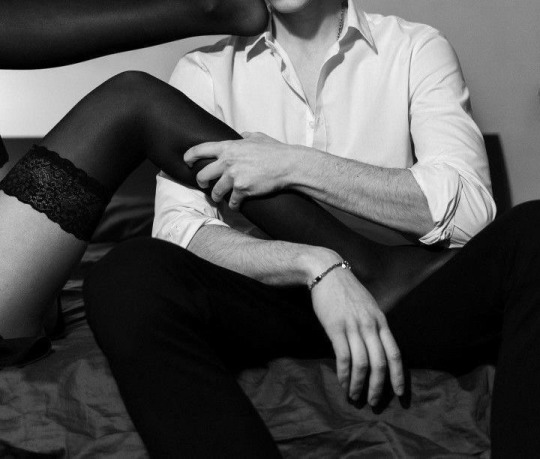
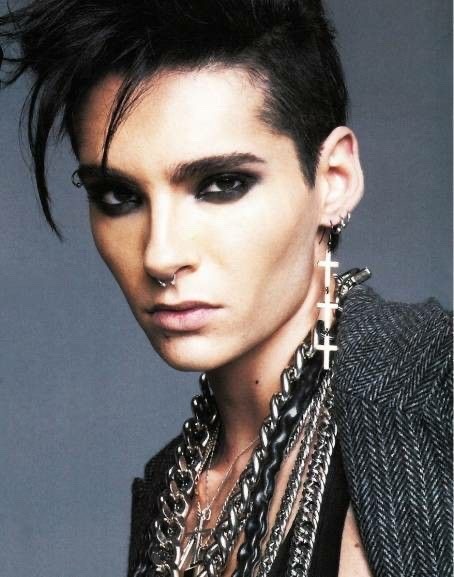
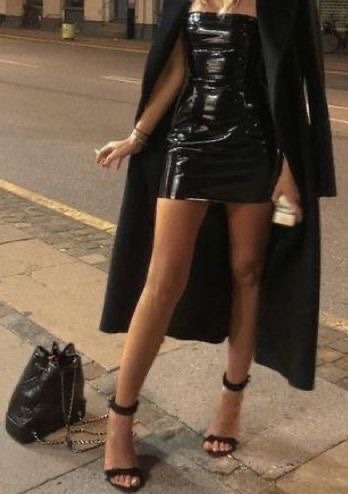

𝐈 𝐜𝐚𝐧’𝐭 𝐠𝐞𝐭 𝐞𝐧𝐨𝐮𝐠𝐡 𝐨𝐟 𝐲𝐨𝐮. ✰
A/n:hey cuties finally a fic out after a month 😭 this is a collab with @tomssexdoll I think we absolutely did amazing she’s a fabulous writer!! I hope you guys enjoy <33
parings: 2011 Mafia Bill x Freader
genre:angst to smut to fluff?
MDNI
warnings:A LOT of swearing p in v dom!bill sub!freader a bit of abuse please please do not read if your uncomfortable or sensitive with these topics!!
You and bill were forced to get married, the promise of your businesses improving if we did. You guys obviously agreed to this wanting to make as much money and more deals if you could.
You and bill had a lot of sex mainly during a middle of an argument, you were both very stubborn and immature, not willing to accept yours and his mistakes. You both had your good moments together not everything was terrible with him, sometimes he’d hold you and tell me how much he loved you, but his actions would be speak a lot more than words. Most nights Bill would be gone coming home at midnight or even later, lying to you constantly the question that always lingered in the back of your mind was that did he really love you or was he just using you?
You both had multiple fights a week some even becoming more abusive than usual, one got so bad he almost succeeded at throwing a chair at your head. You guys hated being like that towards each other but you couldn’t help it. It was way too stressful and overwhelming of being one of the top mafia couples in the world.
Bill came home late one night again saying goodbye to all his buddies as they sped off, he fiddled with the door before swinging it open and slamming it shut, You were in the lounge, it was pitch black having a cigarette lit your legs crossed, you felt like scaring him making him mad anything at all.
As he went to walk up the stairs you startled him with your voice, “And where the fuck where you exactly.” “Jesus Christ don’t scare me like that why are you in the dark for?” he grumbled before turning on a light noticing your red puffy eyes.
“Have..have you been crying?” he scoffed “As a matter of fact I have did you know how fucking worried I was about you what if you got shot?” You raised your voice after talking a long drag from your burning cigarette.
“Fuck sake like you’d care wether if I was dead or alive, can’t I have my fucking fun? I’ve been stuck here for a week with you for work” he went over to the liquor cabinet taking out his aged whiskey and sitting in his chair pouring the burnt umber drink into the glass.
“You’re a fucking asshole you know that right?” You glared at him your jaw slightly clenched “trust me I know” he lit a cigarette as well “you tell me everyday just as I tell you that you’re a whiny bitch all the time.” he gave you a sarcastic smile rolling his eyes and taking a huge sip from his whiskey.
“I can’t believe you just go out, stay out till 5 in the morning and I get no fucking call at all, you expect me to greet you with cookies and milk but yet you still think I’m a shit wife your the fucking, pathetic one here.” You shouted, “don’t yell at me you drive me up the wall here” Bill yelled back getting up from his chair and storming over to me, he grabbed your wrist with so much force pulling you up towering over you.
“oh you think you scare me? Nice try.” I snatched my wrist away, blowing the smoke in his face, Bill just stood there his gaze burning into mine a certain rage taking over him.
“You are so controlling can’t a grown man do what he wants when he wants?.” He huffed his chest heaving up and down in anger Bill was gonna snap at any moment. “I’m the controlling one here?! Aren’t you the one who gets mad at me for looking in another guys direction, you beat up any man I talk to refuse to let me go out when I’m apparently wearing something too “short” but yes bill I’m the controlling one you fucking hypocrite.” You scoffed shaking your head.
“At least I have good reasons, you’re the one getting upset over me being out late suck it up doll.” he spat his words cruel, “You just don’t get it do you? It’s not the fact that you’re out late I don’t give a shit do what you want, It’s the fact that I never got told where you are, I’m sitting here late at night wondering where you are and if I should call the police or not, I’m really fucking sorry for worrying about you is that so bad?” Your voice still raised anger coursing through your veins.
“You make me so fucking mad..” he grunted walking closer towards you narrowing his eyes at you. “Cry me a river,you’re a grown man aren’t you? Learn how to deal with your emotions properly.” You rolled your eyes, Bill grabbed your hair pulling you close “don’t fucking speak to me that way!!” he yelled inches away from your face.
You pushed him off slapping him harshly across the face leaving a bright red hand mark. “Don’t you ever fucking touch me like that” you screamed, “You know what I could kill you right now.” He yelled back rage in his voice.
“Shoot me then fucking shoot me.” I yelled my voice starting to strain. you and bill just stood there silent for a second both of your chests heaving up and down.
Without another word bill grabbed you by your waist and kissed you passionately his tongue entering your mouth searching for dominance, “Your so fucking whiny aren’t you” he muttered between kisses, his hand roughly slapping your ass you couldn’t help but moan. He pulled away from the kiss a string of salvia parting from your mouth, Grabbing your hand and taking you upstairs he had a pretty strong grip you almost couldn’t keep up.
When you guys made it to your room he threw you on the bed towering over you his dark brown orbs filled with such lust, wasting no time he ripped off your shirt then your jeans leaving you in nothing but your black lace set of lingerie. Bill groaned at the sight a large tent forming in his pants, “You’re so pretty f’me Schatzi” he said in a raspy voice, your breath hitched your core getting even more wet. Even though sometimes Bill was a complete prick you couldn’t help the affect he had on you.
He unclasped your bra and ripped off your underwear, your nipples and your wet cunt getting exposed to the cool air a shiver went down your spine running his fingers over your breasts. You whined “Don’t be a tease Billy this isn’t fair” he smirked and lifted your chin up “Does my doll want me fuck her dumb hm? Is that what you want?” His knee was rubbing your clit non stop, you could burst any second nodding desperately Bill without any hesitation removed his belt in one swift move, his jeans and boxers pool at his ankles letting his cock spring free.
Even though how many time you guys have fucked you could never get over how big he was. Bill swiped a finger at your folds his finger now coated with your arousal “I haven’t even done anything yet and your already wet for me doll you’re just that desperate aren’t you?” You couldn’t answer, He snickered without another warning he slammed into you then pulling back out fully before filling you up once again. You moaned loudly the way his cock fit your pussy was amazing, His hands made their way down to your waist gripping tightly bound to leave marks tomorrow. “Fuck Jesus you feel s’good around my cock love gonna fill this slutty hole with my cum” he groaned out.
Bill moved at a rapid pace his tip kissing your cervix perfectly moans were spilling out of you uncontrollably, you were in pure ecstasy, your walls clenched around him every time he hit that gummy spot the knot in your stomach growing tighter with each passing second “Mm Bill fuck fuck I’m close!” you breathed out he moved his hand down to your clit rubbing his thumb in fast circles, “Cum on this cock for me doll” he whispered you were about to break.
Those words were all you needed to hear, your legs shaking bringing you over the brink you screamed out his name cumming all over his cock, “Fuck baby that’s it” Bill let out a low growl before shooting his cum inside you thank god you were on the pill. He collapsed on top of you, lifting his head up and pressing a kiss to your temple, “You okay my sweet girl? Did I go to rough?” he said in worry, you smiled “Yes billy I’m okay it was amazing” you replied.
“I’m sorry about the fight earlier Liebe you just mean to much to me and I can’t lose you ever I don’t know what I’d do” you were in awe “Billy you aren’t ever going to lose me I promise you that” you took his hand in yours and kissed him passionately you really did love him.
A/n:I hope you guys enjoyed! Me and @tomssexdoll worked really really hard on this, she did an amazing job. but I’m glad I’m writing again, I’m gonna try and write more mwah bye cuties <33
Taglist:
@itsmealaiah
@noellethinks
@jadedchar
@madzandmore
@memzyyy
@tomssexdoll
#tokio hotel#tom kaulitz#tokio hotel x reader#billkaulitz#georg listing#gustav schäfer#bill kaulitz smut
189 notes
·
View notes
Note
Hi, I know you already addressed a lot of the mischaracterization of Kon and Clark's relationship, but I was under the impression that Kon actually means 'abomination' in Kryptonian, and that Clark giving him that name was a rejection in itself. I am not very well versed in comics, so I apologize if this is just a fanon concept.
Hello!
You're not alone in being misled, as this concept has stretched far and wide and it is a very common theme in fandom works like fanfic.
The concept of Kon-El meaning "abomination" is canon, not fanon, but its source is from the New 52 reboot.
Some fans have in an attempt to create more angst for Kon adopted the concept that Clark gave Kon this name knowing full well what it meant as a way of rejecting him - this is incorrect - and it is blending versions together to make something that just never actually happened with Clark.
There are two versions of Kon getting his name in a main continuity - one in the 1994 comics, and the other in the New 52 Superboy comics.
To best answer your question, I am going to talk about the New 52 version first where "Kon-El" means abomination.
Also, it is important to remember that this Kon-El, isn't even actually Conner Kent (that's another post for another day comics are weird).
Anyway, in the New 52 reboot Superboy is 'called' Kon-El not by Clark, but by Kara!
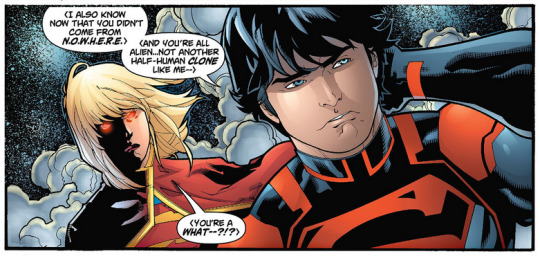
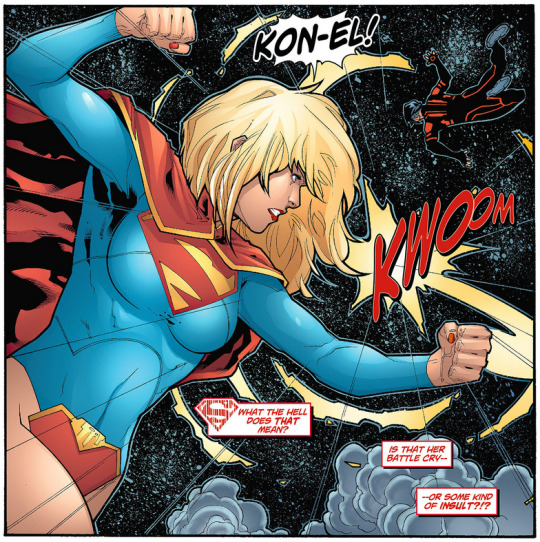
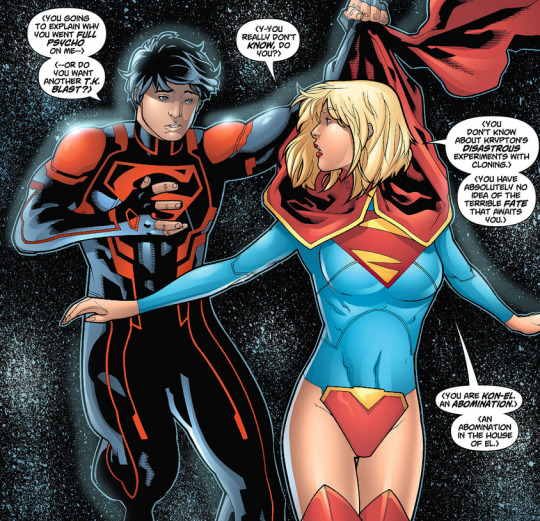
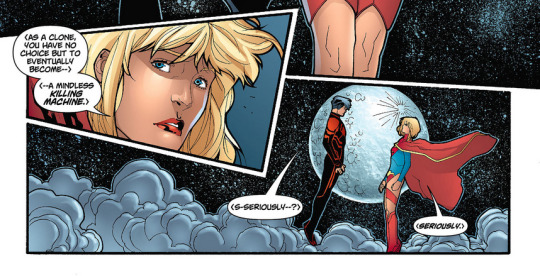
Superboy v.6 (2011-2014) #6
In this iteration, Kara has some extreme prejudiced bigotry towards "Kon" for being a clone due to the disastrous history Krypton had involving clones. It prompted her to attempt to kill "Kon" the moment she found out he was a clone after more or less calling him a slur.
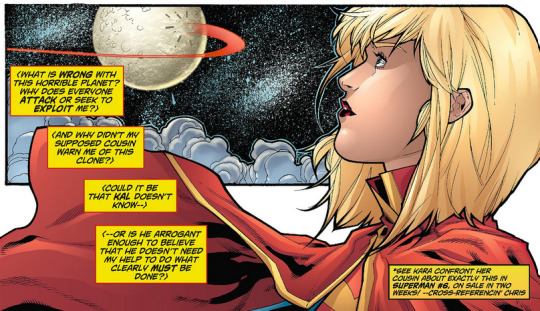
Superboy v.6 (2011-2014) #6
You can blame Scott Lobdell for this particular evisceration of Kara's character and for the name Kon-El warping into 'abomination' henceforth.
This particular run and story is no longer relevant to main continuity and it is not attached to Conner Kent because this did not happen to Conner Kent, but it did in fact happen and Krypton's disastrous history involving clones is still canon as well. Kon is still facing varying degrees of discrimination from Kryptonian-based ideology (Eradicator) because he is a clone.
Now let's talk about Clark and Kon and where Kon-El first came from and put a stop to the slander.
Where the name "Kon-El" originally came from was from Conner's 1994 solo series where Clark offered it to him from a place of affection.
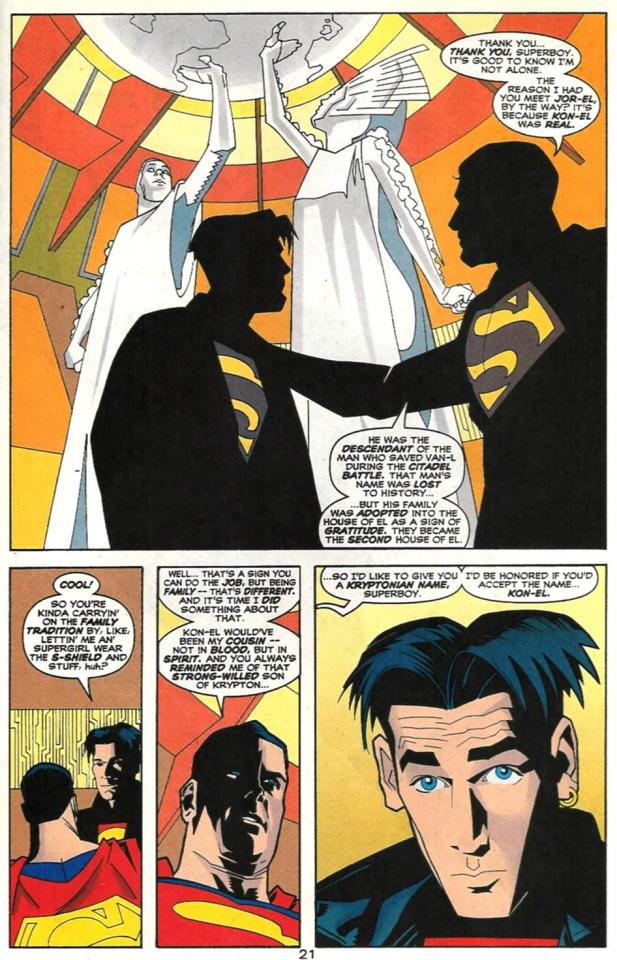
Superboy (1994) #59
The original moment of Kon obtaining his name from Clark was profound because up until this point he did not have a proper name. He was just "Superboy" or "Kid" or "Pup" (derogatory) so when Clark offers this Kon is so happy he starts crying.

Superboy (1994) #59
At this point in time in comic history Kon-El did not mean abomination, "Kon" was a real Kryptonian name, and in the original run Clark did not even have any resentment towards Kon or negative feelings about his existence at all. He trusted him, felt he was worthy of the S-shield as a representative of hope, and at this point he wanted him to be part of his family.
This is Clark adopting Kon into his family right here in this moment - because Superman is the tale of the immigrant, the refugee and of love in family where blood does not equal family. That is what he is saying right here in this issue.
It is also important to note that at this point Geoff Johns' making Kon a 'clone' of Lex AND Clark is not canon and Kon is not even supposed to be blood related to Clark.
In closing...
Clark's relationship to Kon/Conner Kent in the main comic continuity is not hostile or rejection-based.
In their comic origins they had a nebulous relationship which over time evolved to being firmly brothers with a huge age gap and now in current continuity they are again brothers but with a different perspective.
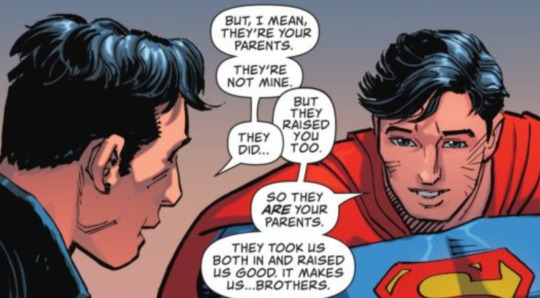
Action Comics #1028
Current continuity Clark who doesn't remember Kon at all knows him for less than a week and claims him and he is actually distraught he doesn't remember him.
Fandom is transformative and angst/hostility/rejection will always be a major theme people will love to create and consume - but it is also important to recognize that some details are simply not canon and should be regarded as transformative works to tell a story.
I hope this clears some things up from the comics side of DC.
#superfam#kon el#kon-el#conner kent#clark kent#kara#i am so sorry kara for the way scott did you wrong#dc comics#i feel like i am forgetting something else but tumblr ATE half of this post when i was typing it when i tried to erase something
733 notes
·
View notes
Note
I think for Zee to truly have a great rogues gallery she'll need some more villains that are fighting her for *her* and not for her father/in relation to her father. I don't think Brother Night (despite Dini seemingly setting him up as her archfoe) fulfills that role too well on account of that-- not only is he another 'Ah, Zatanna, I hate you *and* also I met John before' villain, but I just couldn't get the sense that he contrasts Zee in any fundamental way. He's evil mobster soul-murdering guy. Not really something that lends itself to Zee as a magic-promoting performer (yes he uses magic in a 'bad' way but pretty much anyone can do that, it's not like he's purposefully going out to show people how terrible magic is).
Do you think any of Zee's existing villains might be able to evolve/return to fit in as a villain only for her, or do you think her big bad guy/gal might just have to wait to get made? I'm partial to Caligro.
Sorry for the late reply, life kept getting in the way but I have been meaning to reply to this since I first saw it.
I love your other post on head canons regarding Zatanna villains.
Yes, I agree that Brother Night is somewhat lacking as a villain. I like the idea of a 'magical mobster' but I am not a fan of the serial killer thing, which feels almost like Dini is trying too hard and at the end of the day he is fundamentally a writer for street level heroes.
I love the whole concept of Caligro and I really wish he would make a comeback. An actual stage magician who hates the Zatara's because the latter uses real magic is such an obvious concept that I am surprised that it hasn't been done before. I think it would be even more relevant now, now that we have actual artists beefing AI "artists". Would stage magicians consider real magic to be cheating or just another tool in the tool box?
I can see Caligro starting off as a villain but gradually becoming a friendly rival for Zee. I can see his criticisms forcing Zee to up her stage magic game and examine the line between stage magic and real magic.
But you're right that a lot of villains keep getting tied back to her father. What's interesting is that the Warlock of Ys, the Druid, Allura, Caligro, Merba were introduced in Zatanna's comics and then got back engineered into having been Zatara's enemies. The only villain that Zatara fought during his original Golden Age adventures exploits whom Zatanna met was Tigress. Even that was a short appearance in the Scooby Doo Team Up comic.
Allura is the best contender for arch enemy but she needs a real motivation for her actions and yes, she is also tied to her Dad.
But yes, Zatanna needs a personal nemesis. Someone who could be a good foil for her. Wonder Woman has Ares and Circe whom she "inherited" from Hippolyta and the Amazons but Cheetah is entirely Diana's own nemesis. Lex Luthor, a normal human is Superman's archenemy, not Zod, Brainiac or Darkseid who are aliens and can match him physically but regular human Lex Luthor who worked his way up to the top and whom you can even sympathize with at times.
IMO, a good archenemy is not a foil to the hero but can also unravel the hero. Cheetah can test Diana's mercy and compassion. Joker tests and reveals the absurdity of Batman's no kill rule. Luthor tests Superman's selflessness and humanity. Also, the hero carries some culpability in making the villains worse; Barabra may not have become Cheetah if she never met Diana, Luthor may not assemble an army of super villains if Superman didn't appear and Joker would not be the Joker if Batman didn't accidentally drop him into the chemical vat.
Based on this criteria, the best candidate for becoming Zatanna's arch enemy is Mary Ann Hoyt aka Nimue Ravensong.
She appeared in Zatanna 'Everyday Magic' and even made a cameo appearance in Zatanna's 2011 series.
Nimue was treated as a joke villain but she has potential to grow into a much more lethal threat. Check out this quote from her in Everyday Magic and only the quote without the cutesy art:
"You're pure magic. That's it, isn't it? There's no lien on your soul, no price to pay for your skills. It's as natural to you as breathing. Just mutter some backwards bullshit and thy will be done. That's not fair. Shall I tell you of the innocents I've sacrifice or the years I've traded off my life for the smallest fraction of your power?"
That's chilling.
Further showing how deeply unhinged she is:
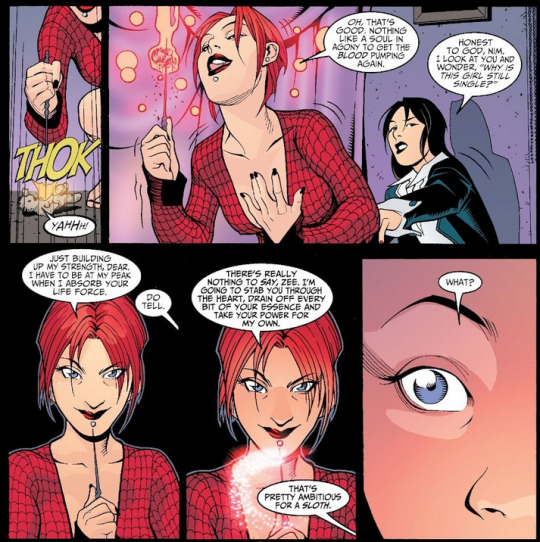
If you think about Zatanna is very privileged; not only powerful in magic but also independently wealthy. We are lucky that she uses her power for good and keeps her dark side in check.
With Mary, we can sympathize because if magic and superpowers existed, we would want that for ourselves but what makes Mary the villain is the extent she is willing to go to attain that power.
And whilst Zatanna is content with using her powers for entertainment and doing good, Mary wants power for herself and so she can lord it over others.
Despite having caught Mary kidnapping and manipulating men into demon contracts and her having admitted to killing men for power and also admitting to getting off of her sadism, Zatanna still decides to keep her company at the the hospital (or maybe its just to keep her in check so she doesn't do something evil):

In Zatanna #1 (2010), Nimue returns very briefly but Zatanna dispatches her with ease:




Poor girl, still winds up catching strays.
These little humiliations could add up to something bigger.
Imagine a story arc where she gets a humiliated a few more times. Her rage builds until she makes a deal with a powerful demonic entity and ends up regretting it. Zatanna saves her but Nimue is still holding on to her jealousy, keeps trying until she finally manages to gain the power wants.
There are shades of Diana/Cheetah here. Although I don't think Zatanna has the same endless supply of compassion and grace that Diana does for Barbara.
#zatanna#zatanna zatara#asks#nimue ravenclaw#mary ann hoyt#caligro#villains#wonder woman#diana of themyscira#cheetah#barbara minerva#wondermagic
22 notes
·
View notes
Text
Y'all ever notice how bizarrely politicized lagomorphs in British children's stories seem to be? The titular hare in "Hare's Choice" (1988) is decidedly monarchic with - one could argue - some vague christological framing as a sacrificial savior at a key point in the story (divine right to rule, or inversion thereof?). By contrast the hares in the Redwall series (1986-2011) are largely (though with some exceptions) a warrior ethno-caste in service to the badger lords of salamandastron. Then of course there's the metaphorical elephant in the room that is Watership Down (1972) which is...well, if you've never read Watership Down I'm not sure I could do it justice for you in a one-sentence summary and if you HAVE read Watership Down then you probably already know exactly what I mean. And then there's one of the OG of British animal tale children's stories - Peter Rabbit. It's probably wildly inappropriate to do so (who knows? it's 2025 now.) but it's so tempting to draw parallels between Peter's adventures (and misadventures) and some of the prominent political anarchists of the same era - I have no evidence that Potter associated with or read their works but it's not difficult to see flashes of Bakunin, perhaps Kropotkin, and even Goldman in Peter Rabbit's motives and actions, especially in relation to the infamous farmer Mr. McGregor. For comparison, the most notable children's book animal tales I can remember from American authors were the Berenstain Bears and Little Critter (aptly named - what was that child? My best guess was always porcupine, but whatever the actual truth is it's no lie that he's a critter alright!) stories. A little bit older ages gets you Warrior Cats and, ultimately, Animorphs. But where were the American rabbits?
41 notes
·
View notes
Note
Hiya! Noticed you’ve been posting about bats for a while. As a newer fan, I was wondering what are some things you love about Helena Bertinelli in particular or what’re things you think fans tend to overlook with her?
Aw, this is such a nice ask! Yeah, I'm recently returned to Tumblr after a long hiatus, but I've been a Batfam-fan for a verrrry long time. I've loved seeing your content---it makes me super happy to see others appreciating Helena Bertinelli. One disclaimer here I is grew up on the 90s/2000s comics and stopped reading after Flashpoint erased/retconned/de-aged/reworked-past-all-recognizability several of my favorite characters, chiefly Huntress and the Birds of Prey---while I've watched from afar the last decade-plus of stories, and have enjoyed a lot of Batfam fanfic set post-Flashpoint, my Helena is solidly pre-2011 Helena.
I had to give this some thought because I have too many reasons to love Helena. But I think the biggest thing that is overlooked about her is her astounding loyalty. Gonna link panels where I could find them easily because this became a bit of a manifesto as I was drafting it. Whoops.
Helena's loyalty to Gotham isn’t something she ever really articulates in words but it is there in all her actions. Both in her civilian life (Why else be a public school teacher? Why not any other kind of work? Why not just live on her inheritance?) and as a vigilante. Gotham is not good to Helena---personally and professionally, it repeatedly shows her the worst humanity has to offer (up to and including cannibals, not joking). But she continues to fight for it well beyond that of someone whose only loyalty is to themselves.
Leading up to the Quake and NML, Helena, who's been told several times at this point that she will not be getting an engraved invitation to the Batcave, is asked to assist in several major Batfam events. And she does! Every time! She might lampshade that very fact, but she never sits out when her help is needed. If she were only about her own agenda, she wouldn't respond as such. (Is this partly a product of the writers not knowing what to really do with her? Probably, but the effect is that for being a so-called loner with an all-consuming vendetta, she sure does help out a lot. And that's leaving aside all her multi-issue team-ups with Robin or her stint on the JLA....)
Fast forward to NML. 1) She stays in Gotham. Despite the perpetuated narrative that she’s a vigilante for vengeance (Babs’ narration harps on this in particular), the mafia has fled the city; there’s no personal gain for her in staying. But she does. (Without Barbara or Bruce's resources, I can't help but add.) 2) She becomes The Bat. For all the talk about how she wants Batman’s approval, he's not around to approve when she dons the cowl. She's not doing it for him. When she says, "he'll have to accept me," it's not that that's the goal, it's that she knows she's a worthy crimefighter and unquestionably committed to Gotham—Bats can’t gaslight her about that after this. She's verbalizing what no one is willing to ever admit (because NO ONE TALKS ABOUT IT, even after she and Babs finally become friends), that she saw the city’s need and met it. Not what Helena needed, what Gotham needed. 3) She holds her ground when shit hits the fan. For all the talk that she "goes rogue" after her humiliating unmasking (and a frankly unhinged guilt-trip from Batman for not being able to do the impossible), she spends most of her time with the Strongmen reigning in Petit, not abetting his increasing insanity or abandoning his sector to his destructiveness, at the risk of her own life. (That this is exactly what Batman wanted her there to do...implying trust in her choices....GAH). And then of course her one-woman stand against the Joker and his goons, which speaks for itself.
Fast forward again to post-Cry for Blood (where Helena has again been mistrusted and left to fend for herself). We don't see much of Huntress for a while, but when she's back, I love that Helena can resent Batman with every fiber of her being but it never stops her from showing up: zero hesitation to come to Bruce’s rescue in Hush, when there's been no reconciliation between them. Bruce even acknowledges the enormity of that. She later throws herself out a freaking skycraper WINDOW when Checkmate tries to blackmail her into joining them and by extension sell out Batman. She says on panel this is something she would never do.
And of course it's not just Batman she shows up for. Within minutes of meeting Robin in Cry of the Huntress, she protects Tim from his own worst impulses; by their next team up, they're bantering about who owes who a rescue. When Babs calls Helena to ask her to rescue Black Canary in BoP, she goes, questioning only why Oracle is deciding to trust her with the mission, not the going or who it's for. And it's not just people she admires or likes! When she gets Oracle's distress call a few issues later---Oracle, who has held and expressed a grudge against Helena as much if not more than Batman has---Helena goes, immediately. Helena also subs for Arsenal (whom she barely knows, as they've never worked together) on the Outsiders for several months after he’s critically injured, even though it means dealing with an absurdly pissy Nightwing about it.
Her loyalty, despite all the horrors she's witnessed, despite the repeated ostracization, double standards, and lack of faith in her heart and her abilities, should nuance even her most cartoonish characterizations (looking at you, late 90s Chuck Dixon) and how we interpret her in-universe critics (particularly folks like Bruce and Babs).
Don't get me wrong. Helena is deeply flawed and I love that she's a character who grows and matures with many steps backward along the way. She's messy and complicated and I don't always love or understand her choices. But she also shows the hell up.
#helena bertinelli#huntress#i will never shut up about her#thank you for giving me an excuse to wax poetically about my fave#there are other smaller things I love about huntress that I think get overlooked but this is the hill I'll die on for her
21 notes
·
View notes
Text


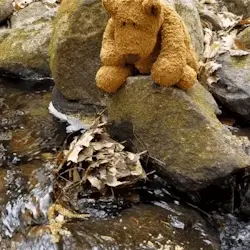
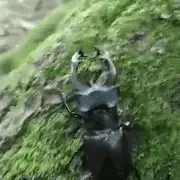



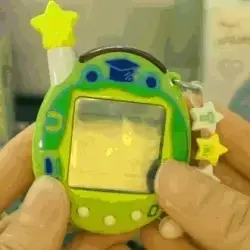
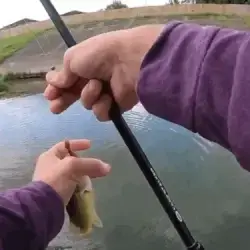
Gon Freecss Boyre Stimboard!!
🌲 🎣 🐛 | 🌲 🎣 🐛 | 🌲 🎣 🐛
🌼 media: hunter x hunter (2011)
🐝 age appropriate? depends! the 2011 version of hxh is rated 14+ due to mild mature content and violence! it's a lot more lighthearted than the 1999 version and i actually really liked it! if you're an action loving regressor, i do actually recommend this as a good anime watch!! as always, i recommend checking any warnings before watching and remember, it's always okay to turn anything off if it isn't for you! <3
🍯 rqd by: anon! <3
🌻 note: THIS IS LITERALLY IF BOYRE WAS A PERSON!!! he's the kind of kid you have to stop and go "empty your pockets bud." and as he does so, he is just pulling out bugs and dirt from his pockets.

#playtime stims#playtime answers#sfw agere#age regressor#agere blog#age regression#sfw agedre#sfw interaction only#agedre#sfw age regression#sfw agedre blog#agedre blog#agere sfw#agedre sfw#agere stimboard#agedre stimboard#boy regression#boyre#boyre board#boyre stimboard#sfw boyre#boy regressor#boyreg#little boy sfw#hxh#hxh 2011#gon freecss#gon hxh#hunter x hunter#hxh agere
47 notes
·
View notes